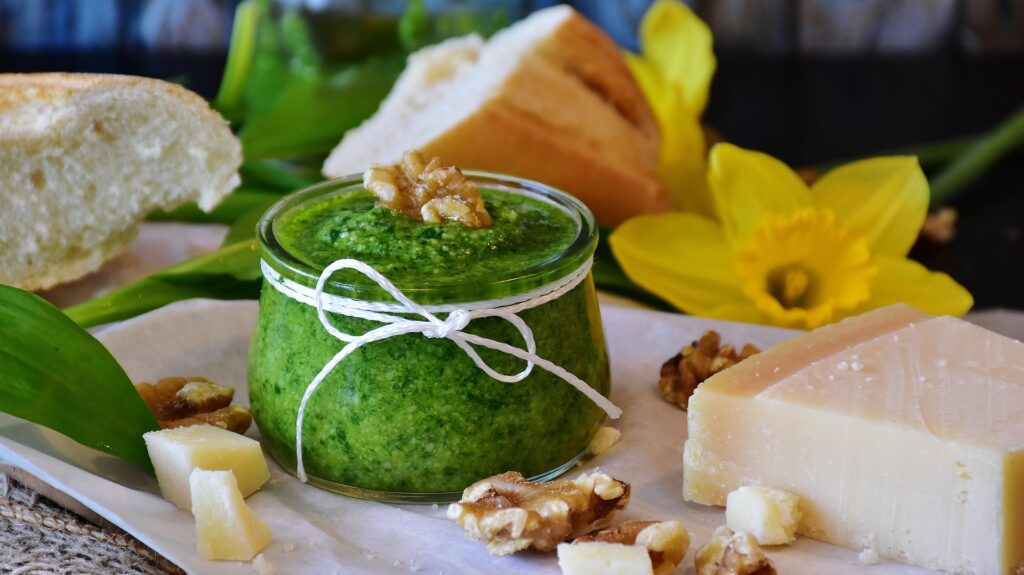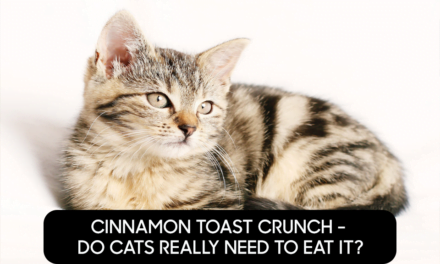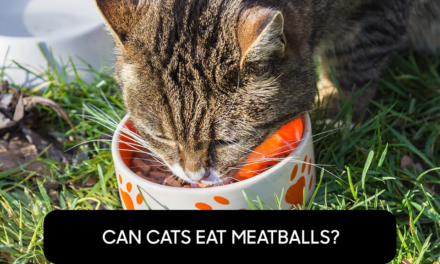
When it comes to the health of your pet, there are many things you need to consider before you decide whether or not you can let them have pesto. Pesto is a mixture of basil, garlic, pine nuts and olive oil. It can be very delicious, but it can also pose a serious health risk to your cat.
Garlic
One of the ingredients in pesto is garlic. This is a good reason to avoid giving your cat this delicious treat. Garlic is very toxic to cats. And even a small amount can be very dangerous.
In the short term, it can cause stomach upset, diarrhea and vomiting. It can also disrupt your cat’s digestion. Your cat may need to be given some kind of anti-diarrheal medication to help him get rid of the toxins.
In addition to garlic, there are other things in pesto that can harm your cat. For example, pesto is usually high in sodium, so if you give your pet too much of this substance, he will become dehydrated.
The best thing to do if you give your cat pesto is to take him to the vet. He will want to give him some antibiotics, and possibly IV fluids to flush out the toxins. If you don’t think you’ll be able to make it to the vet in time, contact Animal PoisonLine. They’ll provide you with professional advice and help you deal with the situation.
Pesto is packed with many spices and ingredients. Most of them aren’t safe for your cat. Luckily, there are some that are, such as basil. Basil is a natural herb that won’t harm your pet.
Pesto is a great way to give your cat a taste of the culinary world, but if you’re planning to give your cat the condiment, do your homework first. You should identify the ingredients that are toxic and omit them.
The Animal PoisonLine hotline is staffed by veterinary nurses and toxicologists. When your cat has ingested something that is poisonous, you should call the Animal PoisonLine immediately. Their 24-hour triage service can help you decide whether to bring your cat to the vet or to stay home.
A single clove of garlic can be fatal to a small cat, so do not give your cat this ingredient. The ingredients in pesto are a lot safer for your feline friend. To get a cat-friendly version of the sauce, substitute catnip for basil, or omit the onion.
Olive oil
Pesto is a delicious Italian sauce made from garlic, olive oil and cheese. However, it is not recommended for pets. Several ingredients in pesto are dangerous, and can cause health problems if given to cats.
The best way to tell if your cat will get sick from pesto is to watch them closely for a few days. If they show any symptoms, you should immediately take them to the vet. Symptoms of garlic poisoning include vomiting, lethargy, diarrhea, kidney damage, neurological problems, and even death.
Pesto contains fat and salt, which are both toxic to cats. This is mainly because cats do not have a gastrointestinal system that’s designed to digest food with added fat.
Olive oil and basil are safe for your pet in moderation. Basil’s health benefits are many, and it can ease allergies and a cat’s overall diet. But the basil-olive oil combo may also cause your pet to be constipated, which can be deadly.
Pesto is also high in calories, which can lead to weight gain and diarrhoea in cats. Large amounts of cheese can also disrupt your pet’s digestive system. You should keep the jar tightly closed and in a location your cat cannot access.
There are plenty of ways to make pesto that’s safe for your cat. For example, some people add walnuts instead of pine nuts. A small amount of garlic is okay for your cat, but you should avoid large amounts.
In addition, it’s best to consult your vet before feeding your pet pesto. He or she can run a test to determine if your pet has been contaminated by garlic. Garlic is five times more dangerous to pets than onions, and is not the only ingredient in pesto that can be harmful.
While the above tips may not have you worried, it’s always a good idea to talk to your vet before introducing your pet to new foods. Your cat is very sensitive and may react to a variety of new flavors, textures, and smells.
Even if your pet is healthy, you should never let him or her lick the dish you’re serving them. Instead, place it in a locked cabinet or out of reach.
Pine nuts
If you have a cat, you may be wondering if they can eat pine nuts in pesto. The answer to this question depends on your pet’s personality and health.
Although it is not harmful to a cat to eat pine nuts, it is important to monitor your pet for signs of discomfort or allergies. Also, make sure to feed your cat in a container that is airtight.
If your cat eats too much pine nuts, it may experience diarrhea or dehydration. It is important to avoid a nut allergy because cats can become severely allergic to certain foods.
If you are unsure of the appropriate amount of pine nuts for your pet, consult your veterinarian. Some owners report that their pets become more talkative after eating pine nuts.
Pine nuts are rich in fats and protein, so you should only offer them in moderation. Your cat’s digestive tract is not designed to digest a lot of fat. However, the unsaturated fats in pine nuts are good for your cat. They help to reduce LDL cholesterol.
Some owners have reported that their cats have become more talkative after eating pine nuts. The antioxidants in pine nuts may also improve heart health. In addition, magnesium in pine nuts is important for helping your cat fight against kidney disease.
Pine nuts are not the only ingredients in pesto. Other components are olive oil, garlic, and Parmesan cheese.
While some people think that their cats can eat pesto, it is not healthy. Pesto contains many chemicals that can cause serious problems.
Some cats may have an allergic reaction to cheese or pine nuts. You should always introduce new foods to your cat in small amounts.
If your cat eats too many pine nuts, it may experience an upset stomach, diarrhea, or vomiting. If it is unable to keep down food, you should take it to the vet immediately.
You can avoid these unpleasant symptoms by giving your cat a moderate amount of pine nuts in pesto. Moreover, you can also try giving your cat a treat instead.
Basil
Basil pesto is a tasty sauce that is often enjoyed by humans. Originally developed in Italy, it is now made with many ingredients. These include basil, olive oil, pine nuts, and Parmesan cheese. It’s popular as a topping for pasta and other dishes. Fortunately, it’s safe for cats to eat.
While basil pesto is delicious, it is not safe for cats to eat in large amounts. However, it is safe in moderate amounts.
Some ingredients in pesto can be poisonous to cats, including garlic and onions. They are not included in the store-bought variety. Depending on the recipe, you may also find other ingredients that are dangerous to pets.
If your cat is eating a lot of pesto, it’s important to check with a veterinarian to find out if the sauce is safe for your cat. Garlic is one of the most toxic ingredients, and a high-dose of it can have severe health effects.
Other ingredients, such as olive oil, may also be unsafe. Although it is considered a healthy vegetable oil, it is still fat. For this reason, it’s best to avoid giving your pet a lot of olive oil.
Pesto can be very tempting to share with your cat, but it’s not a good idea. Cats aren’t designed to digest spices and seasonings, so it can be harmful for them.
Basil isn’t a dangerous ingredient for your cat, but there are some other herbs and vegetables in pesto that aren’t safe. Pine nuts, for example, are a choking hazard. Luckily, there are other ingredients in pesto that won’t cause your pet any problems.
When you’re making a homemade pesto for your pet, you should cut down on the amount of garlic and salt. It’s also a good idea to make sure that the recipe doesn’t contain any black pepper or parmesan.
Despite the risks, pesto is an excellent source of antioxidants, which are good for your pet’s physical health. Antioxidants help to prevent cancer, relieve arthritis, and protect the immune system. Besides, basil is an anti-inflammatory.
Basil can be a great addition to your pet’s diet. You can buy basil pesto at the store, but it’s best to make your own.





